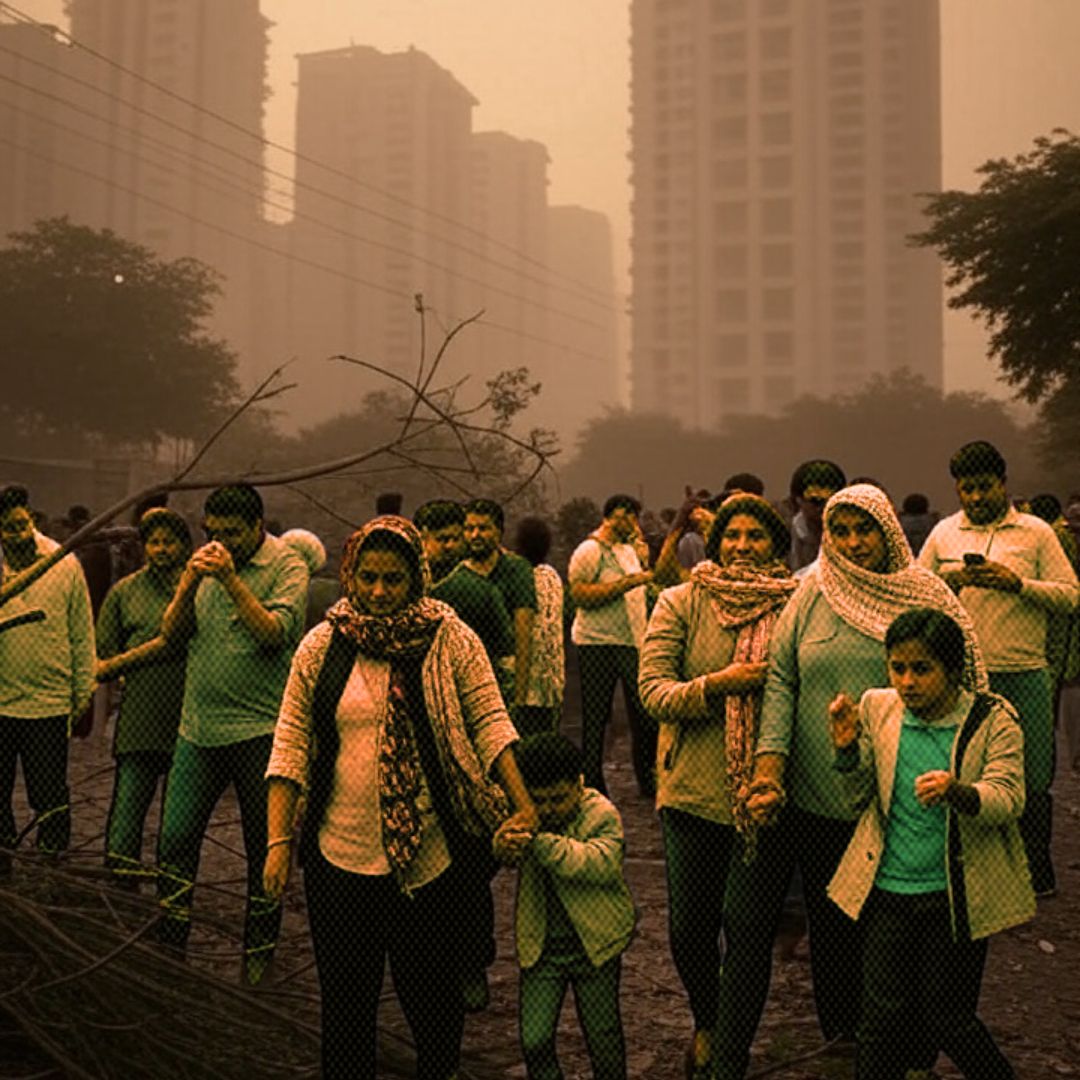A severe dust storm followed by heavy rainfall swept through Noida and the Delhi-NCR region on Sunday evening, June 1, 2025, plunging the city into darkness, disrupting daily life, and causing significant delays at Delhi’s Indira Gandhi International Airport. Winds reached up to 96 kmph, leading the India Meteorological Department (IMD) to issue an orange alert for the region.
While the sudden weather shift brought relief from the scorching heat, it also resulted in flight diversions, uprooted trees, and minor property damage. Authorities urged residents to stay indoors and monitor official updates, with no major casualties reported. Experts warn that such extreme weather events are becoming more frequent, raising concerns about the region’s preparedness for climate change.
Noida’s Skyline Disappears: Flights Disrupted, Daily Life Halted
The dust storm struck Noida and neighbouring areas around 4:30 PM, rapidly transforming the city’s skyline into a scene of swirling dust and low visibility. Residents shared dramatic visuals on social media, showing skyscrapers completely obscured and trees bending under the force of the wind. The IMD reported that wind speeds peaked at 96 kmph in Palam, while Noida and Gurugram experienced similar conditions.
The storm was quickly followed by heavy rainfall, which cooled the city and brought temperatures down by up to 14°C. At Delhi’s Indira Gandhi International Airport, at least four flights were diverted and several others delayed. Airlines such as IndiGo and SpiceJet issued advisories, urging passengers to check flight status and allow additional travel time.
One IndiGo flight from Raipur had to abort landing due to turbulence and high winds, eventually landing safely after a second attempt. Local authorities and emergency services responded by clearing fallen trees and restoring power in affected areas.
Record Rainfall, Cleaner Air, and Climate Concerns
The storm capped off what has already been a record-breaking month for rainfall in Delhi-NCR. May 2025 saw over 188 mm of rain, making it the wettest May in the city’s recorded history and resulting in the cleanest air since the pandemic lockdown. Sunday’s downpour alone brought 15.4 mm of rain to the region, classified as moderate by the IMD.
The rainfall provided much-needed relief from days of temperatures exceeding 39°C and helped clear lingering dust and pollutants from the air. However, meteorologists and climate experts caution that the increasing frequency and intensity of such dust storms and thunderstorms are clear signals of changing climate patterns.
The IMD attributed Sunday’s event to a combination of a western disturbance, cyclonic circulation over Haryana, and moisture incursion from the Arabian Sea. The department has warned residents to expect more rain and thunderstorms through June 3, with gusty winds likely to continue.
Official Response and Public Safety Measures
In response to the storm, the IMD issued an orange alert, advising residents to stay indoors and avoid unnecessary travel. The Delhi Disaster Management Authority (DDMA) activated emergency response teams to clear roads, restore power, and assist affected communities. “We are closely monitoring the situation and have deployed teams to ensure public safety and restore normalcy as quickly as possible,” said a DDMA spokesperson.
Airlines and airport authorities coordinated to manage passenger flow and minimise inconvenience, while local police urged commuters to avoid waterlogged and debris-strewn roads. Despite the disruption, officials confirmed that no major injuries or casualties had been reported, though minor property damage and power outages were noted in several sectors of Noida and neighbouring areas.
Weather Alert 🚨
— Vidit Sharma 🇮🇳 (@TheViditsharma) June 1, 2025
Another strong dust storm has hit NCR — stormy winds, low visibility, and rising danger. Please stay indoors and stay safe.
In recent days, every storm has brought down hundreds of full-grown trees, poles, and hoardings across the city.
It honestly feels like… pic.twitter.com/KgBqyMyUEo
The Logical Indian’s Perspective
The recent dust storm and rain in Noida are a stark reminder of the urgent need for urban resilience and climate preparedness. While the sudden downpour brought welcome relief from the heat, it also exposed the vulnerabilities in our infrastructure and daily routines.
As extreme weather events become more frequent, it is crucial for city planners, authorities, and citizens to work together to strengthen early warning systems, invest in green infrastructure, and cultivate a culture of preparedness and mutual support.
At The Logical Indian, we believe in fostering empathy, dialogue, and collective action to address the challenges posed by climate change. How can we, as a community, better prepare for and respond to such weather events? What steps can individuals, neighbourhoods, and authorities take to build a safer, more resilient city?
#WATCH | Delhi witnesses cloudy skies and dust storm after scorching heat pic.twitter.com/ETyYllAU3e
— ANI (@ANI) June 1, 2024











